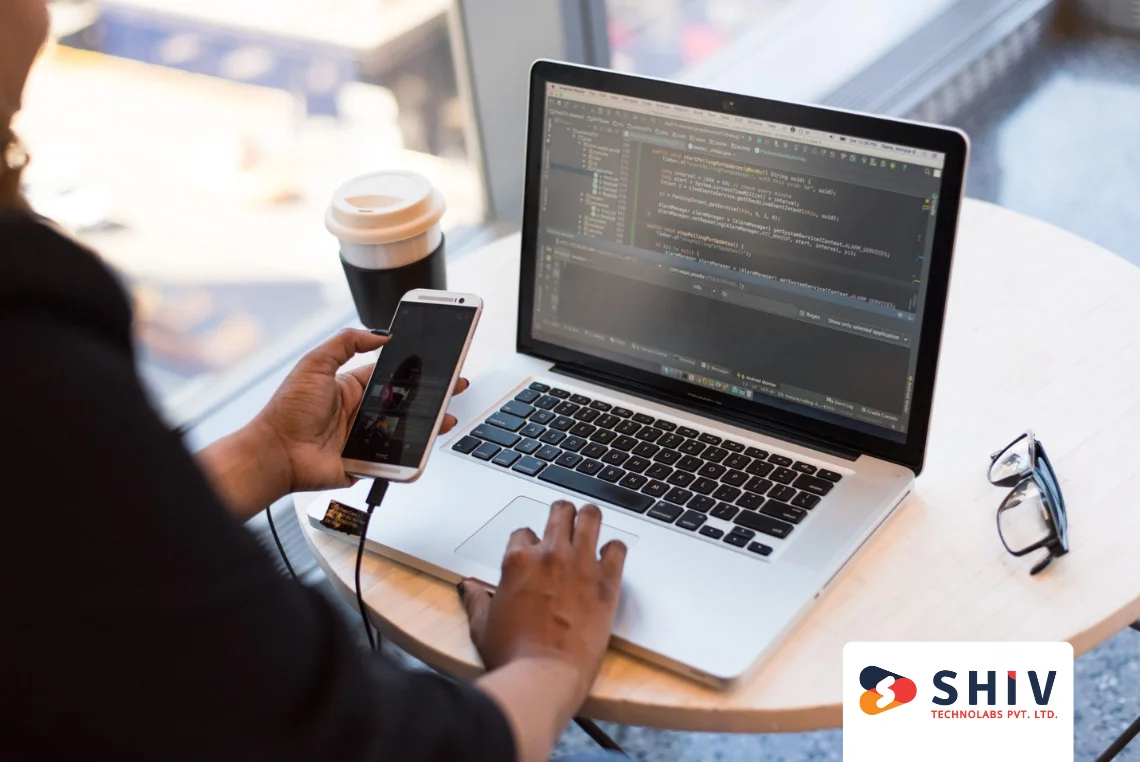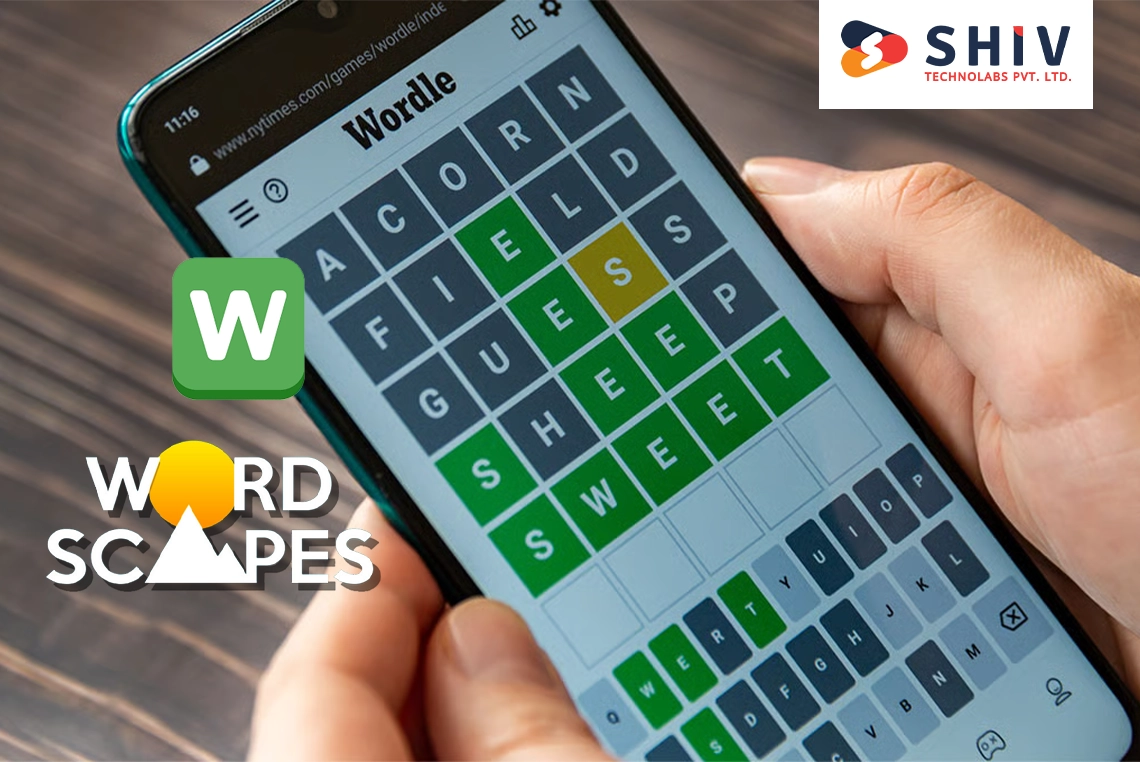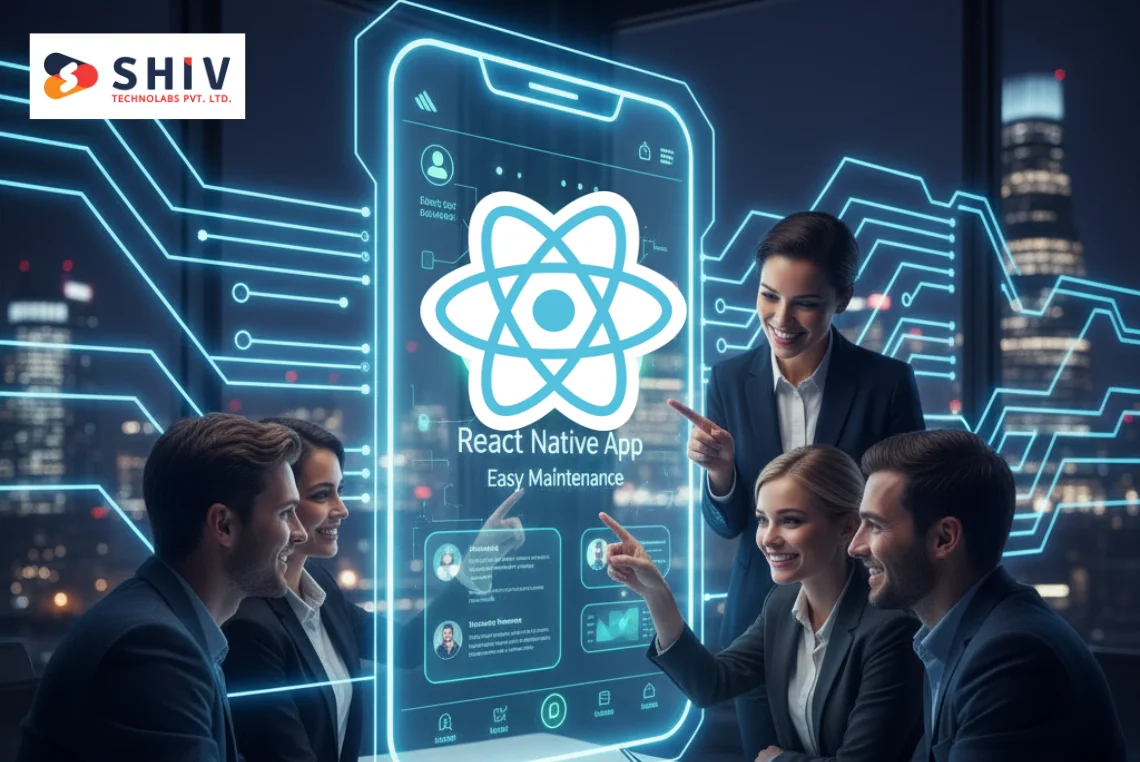Table of Contents
European partners help companies launch faster with clear pricing and predictable delivery. Many choose Mobile App Development Services in Europe to access proven talent and steady communication. You can outsource mobile app developers in Europe and keep budgets under control without losing product quality.
In 2026, buyers want balanced cost, speed, and growth across Android and iOS builds. They also want multilingual coverage for new regions and reliable post-launch support. Custom mobile app development in Europe fits these goals with flexible staffing, transparent contracts, and privacy-first practices.
This guide explains pricing trends for 2026 and white-label choices for agencies and brands. You will see how hourly rates convert into total budgets by app type and complexity. We also outline engagement models that align with the timeline, scope, and risk tolerance.
Our aim is to provide clear and practical guidance that you can act on this quarter. Read on for country-wise rates, model comparisons, and steps to request a precise estimate. Keep this framework handy as you plan your next release with a European team.
Why are businesses outsourcing mobile app development to Europe in 2026?
What makes Europe a preferred hub for app development?
Across leading tech cities, you access deep talent and strong English with solid cross-border collaboration habits. Teams follow strict privacy rules and deliver with practical, repeatable workflows. You can outsource mobile app developers in Europe and plug into a high-standard engineering culture quickly.
How does outsourcing help reduce development costs?
Many European hubs offer competitive hourly rates with predictable taxes and helpful incentives. Nearshore setups keep collaboration close to your time zone and shorten feedback loops. You gain budget clarity while keeping release speed and product quality high. Consistently.
Cost benefits go beyond headline rates when you factor in overlap hours and quicker feedback cycles. Shared working windows mean faster decisions during sprints and fewer idle waits between reviews. That time saved converts into lower burn and earlier release dates. You also access product managers and designers focused on measurable outcomes.
Key advantages
- Skilled app developers fluent in current frameworks
- Transparent pricing with GDPR compliance
- Strong communication and time-zone fit
What factors affect mobile app development cost in Europe?
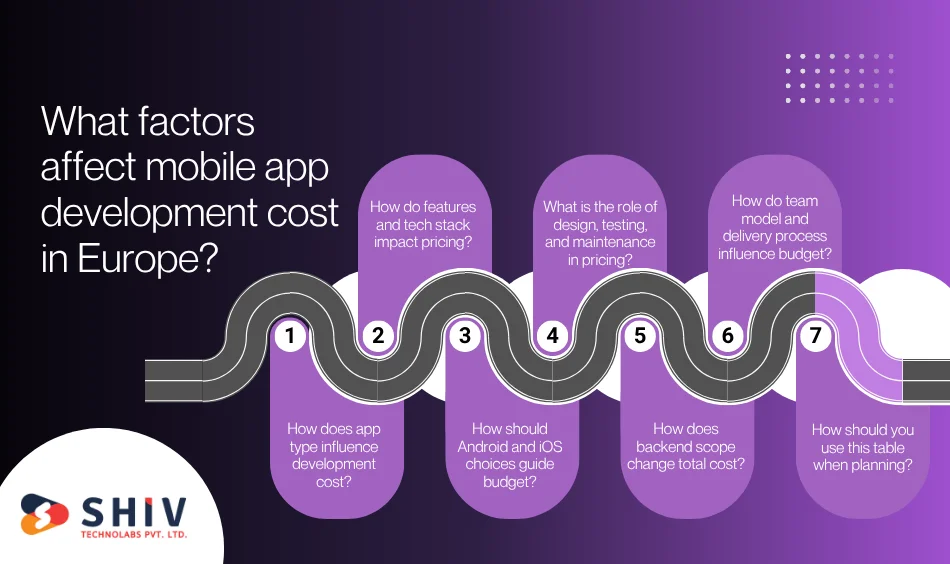
How does app type influence development cost?
Your platform choice shapes team size, sprints, and QA depth. Native builds deliver top device access and performance, but they require separate iOS and Android teams. Cross-platform frameworks speed market reach with one codebase, then add native polish where it truly matters. See React Native and Flutter options for cross-platform work.
How do features and tech stack impact pricing?
Each feature adds design, backend, and testing effort across environments. Chat, payments, maps, media, and push notifications need secure integrations and audit trails. AI search, analytics dashboards, or real-time sync raise effort through data pipelines and cloud services.
How should Android and iOS choices guide budget?
Market goals decide where you start and how you scale. Many brands combine Android app development in Europe and iOS app development in Europe for coverage, then schedule platform-specific refinements. Shared components cut overlap while keeping room for native performance wins.
What is the role of design, testing, and maintenance in pricing?
UX research and UI systems reduce rework and support tickets after launch. Accessibility, privacy reviews, and security testing protect revenue and reputation in regulated markets. Maintenance covers OS updates, dependency care, and performance tuning with a service plan that matches your release rhythm.
How does backend scope change total cost?
Simple APIs cost less than multi-tenant logic, heavy analytics, or event-driven systems. ERP links, payment gateways, product catalogs, and custom search add data modeling and caching work. Observability, alerting, and incident playbooks add stability, which saves time during peak usage.
How do team model and delivery process influence budget?
Senior-lean squads write clearer code, cut handoffs, and reduce rollbacks. Frequent demos with milestone gates keep scope tight and shorten feedback loops. Clear acceptance criteria and staging routines protect timelines while keeping product quality high.
How should you use this table when planning?
Treat the ranges as guide rails for common scopes with clean feature sets. Prices move upward with complex modules, strict compliance, or non-standard devices. A clear brief, supported by wireframes and a risk register, leads to a tighter estimate and smoother delivery.
How much does it cost to outsource mobile app development in Europe (country-wise breakdown)?
You want real numbers before you commit cash and calendar time. Here is a clear view of what teams charge in 2026 and what mid-level builds usually cost. Use it to shortlist countries and request targeted bids with confidence.
Costs shift by country due to living costs, taxes, and seniority mix. Sector depth and compliance needs also move quotes, especially in finance and health. Pick regions that fit your budget goal, delivery speed, and audit needs.
Plan around a mid-level scope with core flows, authentication, payments, and steady QA. Park nice-to-have features for a later sprint to protect the budget and dates. You will compare proposals fairly and avoid scope drift that burns time.
Collaboration speed matters as much as an hourly rate on paper. Near time-zone overlap shortens review loops and reduces stalls between milestones. Those saved hours lower burn and push releases forward with fewer resets.
When you seek proposals, ask for staffing mix, weekly milestones, and capacity per sprint. Request a single owner for risk, status, and approvals across squads. That clarity keeps work moving and decisions quick.
Country-Wise App Development Rates in Europe
| Country | Average Hourly Rate | Typical Project Cost (Mid-Level App) |
|---|---|---|
| Poland | €35–€55/hr | €35,000–€60,000 |
| Germany | €65–€100/hr | €50,000–€90,000 |
| Netherlands | €55–€85/hr | €45,000–€80,000 |
| Romania | €30–€45/hr | €25,000–€45,000 |
| Spain | €40–€60/hr | €30,000–€55,000 |
| UK | €70–€110/hr | €60,000–€120,000 |
Eastern hubs such as Poland and Romania deliver sharp value with strong English and senior engineers. You get practical delivery habits at rates that help you hold dates. Western hubs such as Germany, the Netherlands, Spain, and the UK price higher but bring deep enterprise playbooks.
Many buyers blend regions to balance cost with specialist skill. Place core engineering in Poland or Romania and run discovery or audits in Germany or the Netherlands. That mix holds budgets steady while keeping quality high across releases.
Treat the table as planning guardrails for a clean mid-level scope. Prices rise with complex modules, strict audits, heavy data work, or custom hardware. Share wireframes, user stories, and third-party tools to receive a tighter, phased estimate.
Which outsourcing models work best for app development in Europe?
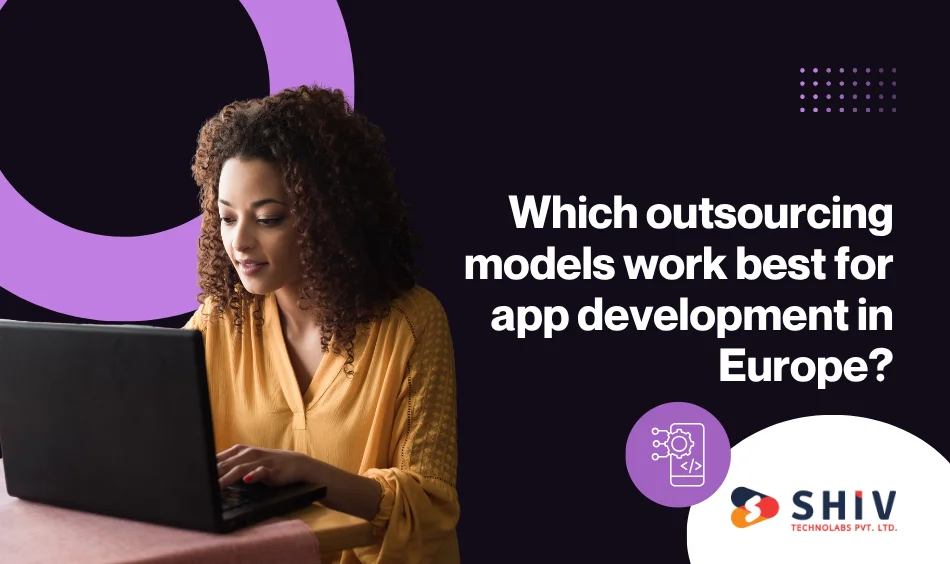
European partners offer multiple ways to structure pricing and delivery. Pick a model that fits the scope clarity, risk level, and launch speed. Your choice should protect cash flow while keeping room for product learning during sprints.
Fixed-cost vs hourly engagement
Choose fixed-cost when your brief is clear, screens are signed off, and features will not shift. You gain price certainty, a milestone plan, and steady demos that track visible progress every week. Lock changes behind written addenda so budgets and dates stay intact during delivery.
Go hourly when discovery continues, or third-party services may change during build. Start with a short discovery sprint to shape an app development cost estimate that European buyers can trust. Fund work in two to four-week blocks with goals, acceptance notes, and capacity committed upfront.
Fixed-cost fits MVPs, well-defined redesigns, and tight timeframes with limited unknowns. Hourly fits complex data work, evolving integrations, and products that need research before building. Many teams begin hourly for discovery, then switch to fixed-cost for a stable feature set.
Dedicated developer model
A dedicated pod gives you stable velocity, direct control, and fewer context switches. The same engineers stay on your roadmap, learn your domain, and cut rework between releases. You get predictable throughput that helps product and marketing plan campaigns with confidence.
Structure a compact pod with one product-focused lead owning scope, risks, and status. Add two to four engineers across mobile, backend, and frontend, with shared QA and DevOps time. This setup suits ongoing roadmaps, frequent releases, and markets that demand quick iteration.
A dedicated model can run on fixed monthly fees with clear capacity and outcomes. You can scale up for peak features, then scale down after release without hiring delays. That flexibility keeps your burn aligned with real priorities across quarters. See Hire a dedicated team.
How to pick the right model for 2026 projects?
Match the model to uncertainty first, then compare vendor playbooks and references. When you outsource mobile app developers in Europe, ask for overlap hours, escalation paths, and tool access before kickoff. Request recent timelines that show milestones, demos, and sign-off steps for similar scopes.
Ask every vendor for two comparable proposals so you can weigh trade-offs fairly. One proposal should cover fixed costs after discovery, and another should outline hourly plus a dedicated pod. Pick the track that protects today’s budget and supports fast iteration after launch.
Why are agencies choosing white-label partnerships?
Agencies choose white label mobile app development services to sell under their brand and expand capacity fast. Specialist teams handle repeatable features while internal staff focus on sales and client success. This approach cuts delivery risk and keeps quality steady across similar projects.
Advantages of white-label partnerships
- Faster delivery cycles
- Private branding under your company name
- Access to pre-built code modules
- Dedicated project management support
What Are the Benefits of White Label Mobile App Development Services in Europe?
Why Are Agencies Choosing White-Label Partnerships?
Agencies and startups resell apps under their own brand while specialists handle delivery. This approach adds capacity fast, keeps quality steady, and protects margins on repeat builds. It also frees internal teams to focus on sales and client success.
How Do White-Label Solutions Reduce Development Expenses?
Vendors reuse proven modules, which cuts build time and testing effort across similar features. You keep full branding control and reach market faster with fewer risks. That speed lowers carrying costs and supports reliable revenue plans.
Advantages of White Label Partnerships
- Faster delivery cycles
- Private branding under your company name
- Access to pre-built code modules
- Dedicated project management support
How to Choose the Right Outsourcing Partner for 2026 App Projects?
What Should You Look for in a European App Development Company?
Start with proof, not promises: shipped apps, relevant references, and measurable results from similar scopes. Check seniority mix, delivery habits, and security posture, including GDPR practices and incident response playbooks. Confirm tool access for design, code, and QA so your team can review progress daily.
How to Get a Reliable Cost Estimate for Your Mobile App Project?
Send screens, user stories, integration lists, and risk notes to request an app development cost estimate Europe. Ask for a line-item breakdown by feature, environment, testing, and project management, tied to milestones. Request overlap hours, demo dates, acceptance criteria, and a single owner for status and decisions.
Factors for Choosing the Right Partner
- Proven app portfolio
- Clear communication tools
- Transparent milestone-based pricing
- Long-term support model
Why Invest in Custom Mobile App Development in Europe?
Benefits of Custom App Solutions
Custom builds match your specific workflows and align with existing data sources and tools. Teams tailor features to regional rules and languages, which helps you grow across markets. You gain long-term control over roadmaps, integrations, and performance targets without rigid product limits.
Custom engineering supports deeper analytics, advanced security, and complex offline needs. European teams ship with privacy-first habits and reliable release routines. That foundation supports faster iterations and stable user experiences during high-traffic moments.
Examples of Industries Benefiting from Custom Apps
- Fintech – secure onboarding, KYC flows, and real-time account features
- Healthcare – patient portals, e-prescriptions, and privacy-first record access
- Retail and marketplaces – catalogs, payments, and fulfillment tracking
- Logistics and mobility – route planning, telematics, and live fleet status
- Education – course delivery, assessments, and parent or learner dashboards
How to Estimate Your Mobile App Development Budget for 2026?
Plan your scope, then request an app development cost estimate Europe vendors can justify. Share screens, user stories, and integrations so estimates match real work. Ask for phased options that protect cash while keeping feature momentum.
Decide platforms early to avoid rework and schedule risk. Many brands start Android app development in Europe for reach, then add iOS app development in Europe for key segments. Confirm testing depth, security needs, and analytics before you fix dates.
| App Complexity | Approx. Cost Range (EUR) | Suggested Timeline |
|---|---|---|
| Basic | €15,000–€25,000 | 1–2 months |
| Medium | €30,000–€55,000 | 3–5 months |
| Complex | €60,000–€120,000+ | 6–9 months |
Use the ranges as guardrails, not fixed prices. Costs rise with advanced features, strict audits, or heavy data work. Ask vendors to price must-have items first and park extras for later phases.
Conclusion
Outsourcing in Europe gives you senior engineers, clear pricing, and dependable releases. With Shiv Technolabs, you gain a team that plans, ships, and reports on schedule. Country choice shapes hourly rates and overlap windows, which affect real delivery speed.
White-label work lets agencies grow revenue without adding permanent headcount. Custom builds match complex workflows and connect critical systems for long-term value. Shiv Technolabs supports both paths with senior pods, clear handoffs, and steady communication.
If you need a trusted Mobile App Development Company in Europe, consider Shiv Technolabs for your shortlist. Ask for two proposals: a fixed plan after discovery and a dedicated team option. Pick the path that supports launch dates now and future growth after release.
FAQs
How much does it cost to outsource mobile app development in Europe?
Typical mid-level projects range from €25,000 to €120,000 in 2026.
Which European country is most affordable for app development in 2026?
Poland and Romania often provide the best value with senior engineers.
What is the average hourly rate for app developers in Europe?
Expect roughly €30 to €110 per hour, based on country and seniority.
Is white-label app development profitable for agencies in Europe?
Yes. Agencies sell under their brand and scale delivery without long hiring cycles.
Do outsourcing companies in Europe handle post-launch support and maintenance?
Most vendors offer SLAs that cover updates, security, and performance care.
What factors impact the final mobile app development budget in Europe?
Scope, features, integrations, security needs, team model, and the required timeline.

